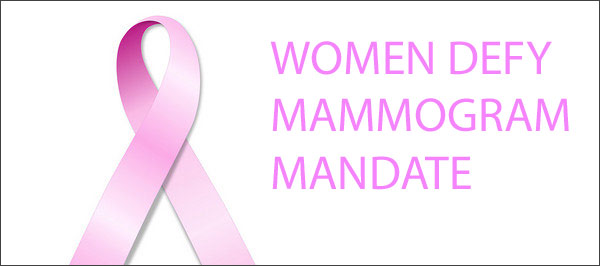 A new study shows the strength of girl, or more properly, woman power, and this Ob/Gyn says: “Go girls!” I’m talking about research out of Harvard, published by the American Cancer Society in its flagship journal, Cancer, looking at mammogram choices made since 2009. It turns out that since a governmental panel carrying a lot of weight in prevention decision making restricted the ages and intervals women should get mammograms, nothing has changed. Thank God, since that panel, the U.S. Preventative Services Task Force is the outlier. In 2009, the USPSTF released controversial recommendations proposing drastic limits on which women should receive this life saving screening. The new data says that overall rates of mammograms in various groups advised against receiving them continue as before. Hooray! That’s great news from my perspective, and also the American Cancer Society, the American College of Obstetrics and Gynecology and others who stand by their more inclusive advice. That advice: Yearly mamms starting at age 40. USPSTF recommendations: Every other year, starting at age 50, not needed after 75.
A new study shows the strength of girl, or more properly, woman power, and this Ob/Gyn says: “Go girls!” I’m talking about research out of Harvard, published by the American Cancer Society in its flagship journal, Cancer, looking at mammogram choices made since 2009. It turns out that since a governmental panel carrying a lot of weight in prevention decision making restricted the ages and intervals women should get mammograms, nothing has changed. Thank God, since that panel, the U.S. Preventative Services Task Force is the outlier. In 2009, the USPSTF released controversial recommendations proposing drastic limits on which women should receive this life saving screening. The new data says that overall rates of mammograms in various groups advised against receiving them continue as before. Hooray! That’s great news from my perspective, and also the American Cancer Society, the American College of Obstetrics and Gynecology and others who stand by their more inclusive advice. That advice: Yearly mamms starting at age 40. USPSTF recommendations: Every other year, starting at age 50, not needed after 75.

Why the difference? Why did the 16 person panel of primary care experts in prevention and public health nix mammograms for younger and older women? Are you ready? Wait….
For women in their 40’s, the number of screenings needed to detect one cancer is about 1900; for those 50 and above, about one in 1300. The “cost” of that many negative mamms was arbitrarily deemed too high. The costs involve benign biopsies, anxiety, inconvenience, and of course….money! To YOU, the costs mean life threatening breast cancers under diagnosed for women younger than 50 and older than 75.
The radiologists, cancer society, Ob/Gyns and essentially every other group advocate early mammograms, and with good reason: THEY SAVE LIVES. Yes, many spots seen in younger women, and some older, are benign. Yes there is emotional angst and cost involved. But because the “sojourn time”, meaning the time from when a woman’s cancer is small, detectable only by mammogram, and results in a 98% cure rate, to when it is a lump, or pain, or skin dimple, is 1/2 as long in the 40’s as in her 60’s, yearly screening makes sense after 40. That said, of course women can always opt out, but a healthy discussion of her personal risks, fears of cancer, worry until a biopsy and other very personal factors is in order first.
As for the USPSTF stop date at 75? It’s because “evidence is lacking and the balance of benefits and harms cannot be determined”. The real reason stated elsewhere is that women are more likely to die of something else than their breast cancer at that age, so it’s not worth diagnosing! Really! Is a triathlete who eats Mediterranean, exercises 3 hours a week and takes no medicine the same as the “average” patient population health experts assume with sweeping recommendations? Of course not.
Here’s the thing: Women can do a lot to detect early, curable breast cancer, starting with mammograms, and sometimes other imaging, like ultrasounds and MRI. YOU ARE DIFFERENT, and not the “average” person that the coming healthcare transformation addresses. Talk it over here, with your doctor and your closest friends. Then decide. For now, you still can. But under Obamacare, the USPSTF was charged with making nationally influential screening and prevention judgments. Previously, doctors and patients could dismiss them. With Obamacare, they become the standard on which Medicare and private insurers will grant benefits–or deny them. In other words, if USPSTF doesn’t grade it A or B, you’ll pay for it if you want it. They promised us no rationing, but why with such a high-stakes/low-risk procedure as mammography wouldn’t they err on the side of caution, and look at the specialties who treat these women, and still advocate for mammograms earlier and more frequently? You may not want to contemplate the answer. But if so, start a thread here.
That’s my 2 cents worth, and I’m stickin’ to it.
